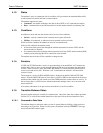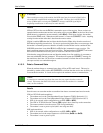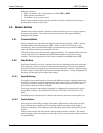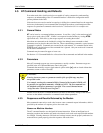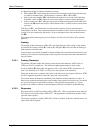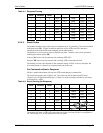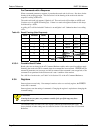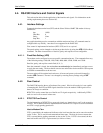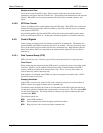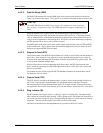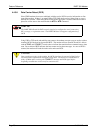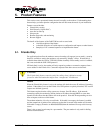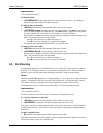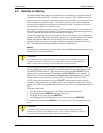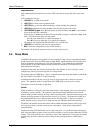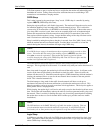
Feature Reference DART 300 Modem
Page 26 2110212 Rev 1.0
Modem to Host Flow
The local host controls the RTS signal. When asserted, it indicates to the modem that it is
permitted to send data to the host on the Rx line. This includes both command state and data state
material. When RTS is de-asserted, the modem will hold all data, command responses, and
replies.
4.4.2.2. DTR Flow Control
There is an additional flow control applied using the DTR signal. When DTR is de-asserted, the
modem will hold data state traffic but will continue to allow both send and receive in command
state (based on RTS/CTS).
Any incoming packets received while DTR is off are held in the modem buffers until a packet
arrives at a time when DTR is on. At that point, all buffered packets are forwarded to the host.
4.4.3. Control Signals
Control signals are useful but not all of them are required in all installations. The modem does
require that RTS and DTR be asserted for data flow to be enabled. This can be forced (as noted
above) if the local host device cannot drive them in a meaningful way. Ring Indicator (RI) and
Data Carrier Detect (DCD) are controlled by the modem and are optional for the local host to
make use of.
4.4.3.1. Data Terminal Ready (DTR)
DTR is used in two ways. The first is part of flow control; the second is to escape data state.
Flow Control
When in data state, the modem treats the DTR signal as a permission to pass received data to the
local host. If DTR is off, the modem will hold received data in internal buffers until DTR is
asserted. DTR has no effect on the transmission of data. This is a one-way flow control, on
received data only, while in data state only.
If the modem is in command state, DTR has no impact on responses and return codes. DTR is
specifically related to data state.
Escaping Data State
Using DTR as a receive flow control in data state is related to using the on-to-off transition of
DTR as a means of escaping from data state to command state.
The modem can be configured to use the on-to-off transition of the DTR signal from the host to
exit data state and enter command state, and optionally close the session. The AT command &D
sets the desired behaviour. The factory default is to hang up any remote connection and enter
command state (&D2).
The available options are:
&D0 Ignore DTR transitions
&D1 Enter command state without changing on/off-line condition
&D2 Hang up (close active session) and enter command state



